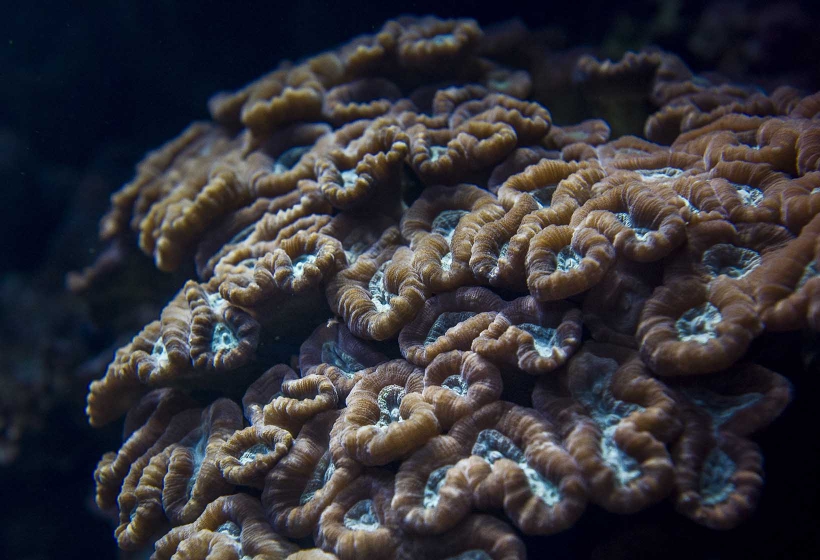Candy-cane coral

Biology
The candy-cane coral is a colourful species, usually with brown polyps and neon green centres. Like other coral species, this coral is a host to zooxanthellae, small algae that have a symbiotic (beneficial for both) relationship with the coral. The algae live in a safe, stable environment within the coral’s tissues, while the coral receives nutrients produced by the algae through photosynthesis. This way, corals are able to grow rapidly and form vast reef structures. The coral may also feed on zooplankton, captured by the tentacles of its small polyps.
Conservation
Coral reefs around the world are in danger. The major threat to corals is global climate change, high temperatures and ocean acidification. Localized threats to corals include fisheries, invasive species, dynamite fishing, chemical fishing, pollution, sedimentation, and human recreation and tourism activities.
Curiosities
These corals have fluorescent pigments which protect them from excessive solar exposure, acting as “sun screen”.
